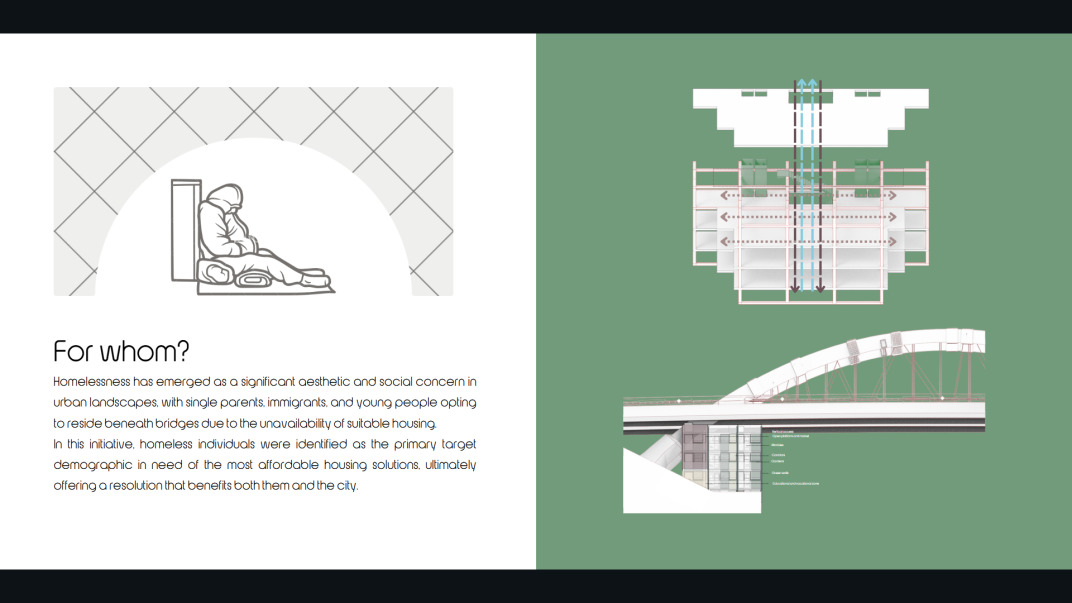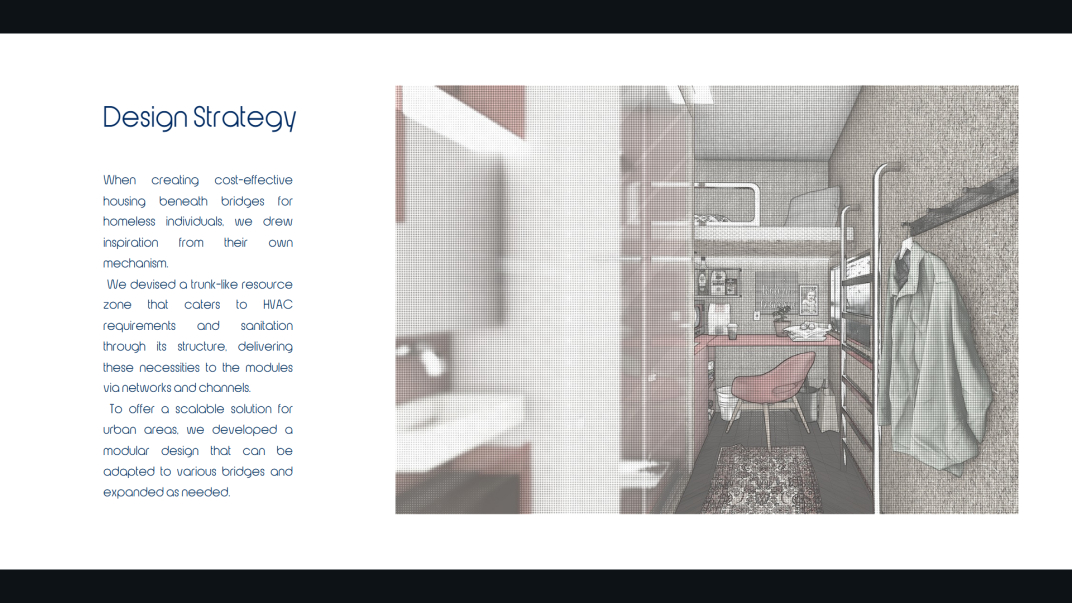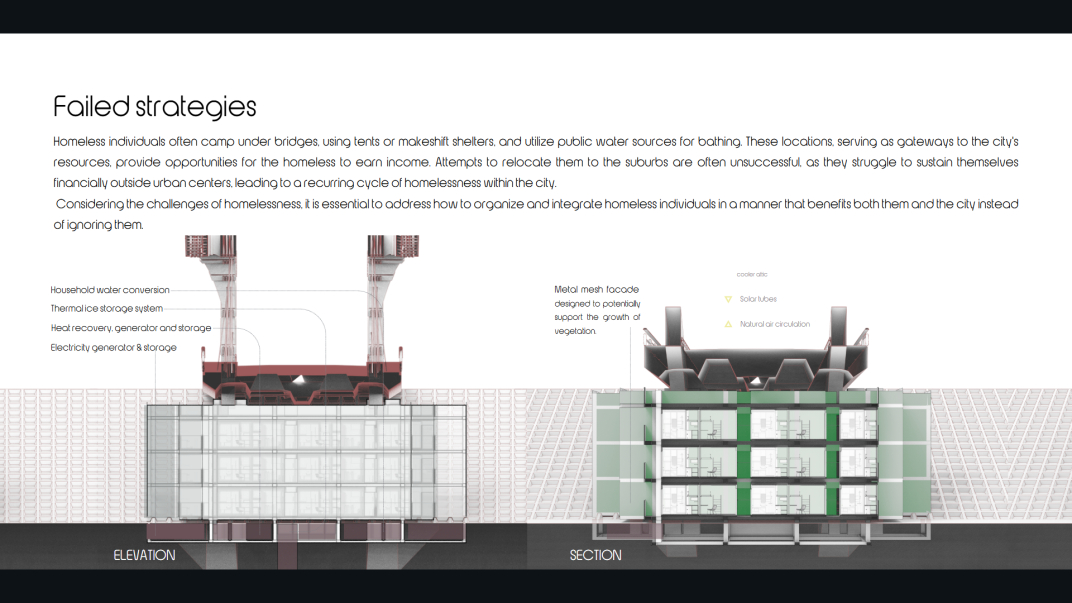Year:
2024
Location:
Tehran
Design team:
Sara Maleki
در بسیاری از شهرهای بزرگ، فضاهای زیر پلها به طور ارگانیک به پناهگاههایی برای افراد بیخانمان تبدیل شدهاند که از آنها در برابر شرایط آب و هوایی محافظت کرده و حس حریم خصوصی را القا میکنند. این مکانها، به دلیل نزدیکی به مراکز شهری، دسترسی آسانتر به منابع ضروری را فراهم میکنند و در عین حال ساکنان را قادر میسازند تا سطحی از ناشناس بودن را حفظ کنند. اگرچه شهرها دارای خانههای خالی متعددی هستند، بسیاری از گروههای آسیبپذیر - مانند والدین مجرد، مهاجران و جوانان - به دلیل کمبود مسکن مقرون به صرفه به زندگی در زیر پلها روی میآورند.
این ابتکار، توسعه مسکن بسیار کمهزینه در زیر پلها را پیشنهاد میدهد که به طور خاص جمعیت بیخانمان را هدف قرار میدهد. با توجه به اینکه فضای عمومی به طور مؤثر به خانهای برای افراد فاقد مسکن خصوصی تبدیل میشود، این طرح به مکانیسمهای بقای روزانه آنها احترام گذاشته و با آنها سازگار میشود. با الهام از این رفتارها، یک سیستم مسکن مدولار توسعه داده شد که تهویه، بهداشت و کنترل آب و هوا را از طریق یک زیرساخت مرکزی ادغام میکند. این طرح مقیاسپذیر است و امکان گسترش و سازگاری در انواع مختلف پل را فراهم میکند. هر ماژول به عنوان یک خانه کوچک جمع و جور عمل میکند، با واحدهای پایه شامل امکانات ضروری و واحدهای الحاقی در دسترس برای زوجها، با هدف ایجاد یک راه حل زندگی شهری آبرومند و پایدار.

In many major cities, the spaces beneath bridges have organically transformed into shelters for homeless individuals, offering protection from weather conditions and a sense of privacy. These locations, due to their proximity to urban centers, allow easier access to essential resources while enabling residents to maintain a level of anonymity. Although cities contain numerous unoccupied residences, many vulnerable groups—such as single parents, immigrants, and young people—resort to living under bridges due to the lack of affordable housing.
This initiative proposes the development of ultra-low-cost housing under bridges, specifically targeting the homeless population. Recognizing that public space effectively becomes home for those without private dwellings, the design respects and adapts to their daily survival mechanisms. Inspired by these behaviors, a modular housing system was developed, integrating ventilation, sanitation, and climate control through a central infrastructure. The design is scalable, allowing for expansion and adaptation across different bridge types. Each module functions as a compact microhome, with base units including essential amenities and extension units available for couples, aiming to create a dignified and sustainable urban living solution.











